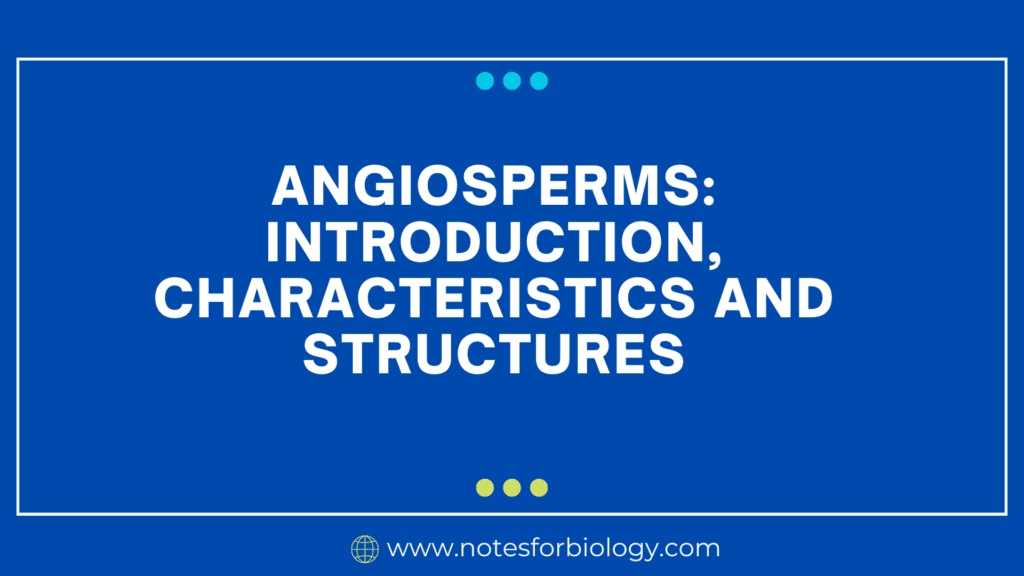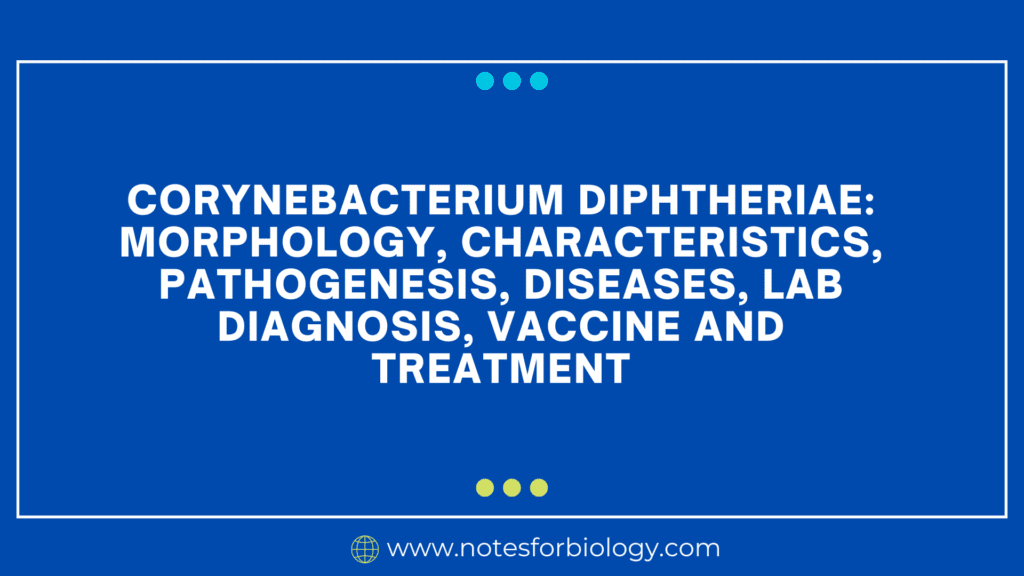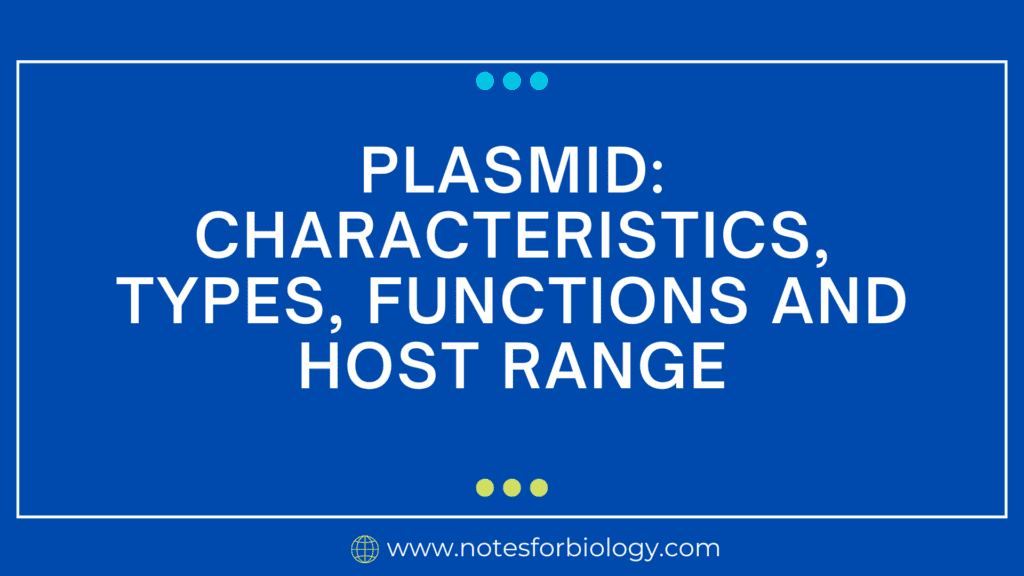Angiosperms, or flowering plants, are the most diverse group of plants on Earth, comprising over 300,000 species. They dominate most terrestrial ecosystems and have a vast array of forms, ranging from tiny groundcovers to towering trees. Angiosperms are the biggest class of plants, distinguished by the development of flowers and seeds contained within a fruit. This separates them from gymnosperms, which have bare seeds that are not protected by a fruit. Angiosperms come in a vast range of shapes and structures, adapting to almost every ecosystem on Earth.
Table of Contents
Introduction
Angiosperms belong to the Magnoliophyta division and are distinguishable from other plant groups by their reproductive organs, which are flowers. The term “angiosperm” is derived from the Greek words “angion,” meaning “vessel,” and “sperma,” meaning “seed,” alluding to the seeds found within a fruit.
Angiosperms are the biggest class of plants, distinguished by the development of flowers and seeds contained within a fruit. This separates them from gymnosperms, which have bare seeds that are not protected by a fruit. Angiosperms come in a vast range of shapes and structures, adapting to almost every ecosystem on Earth.
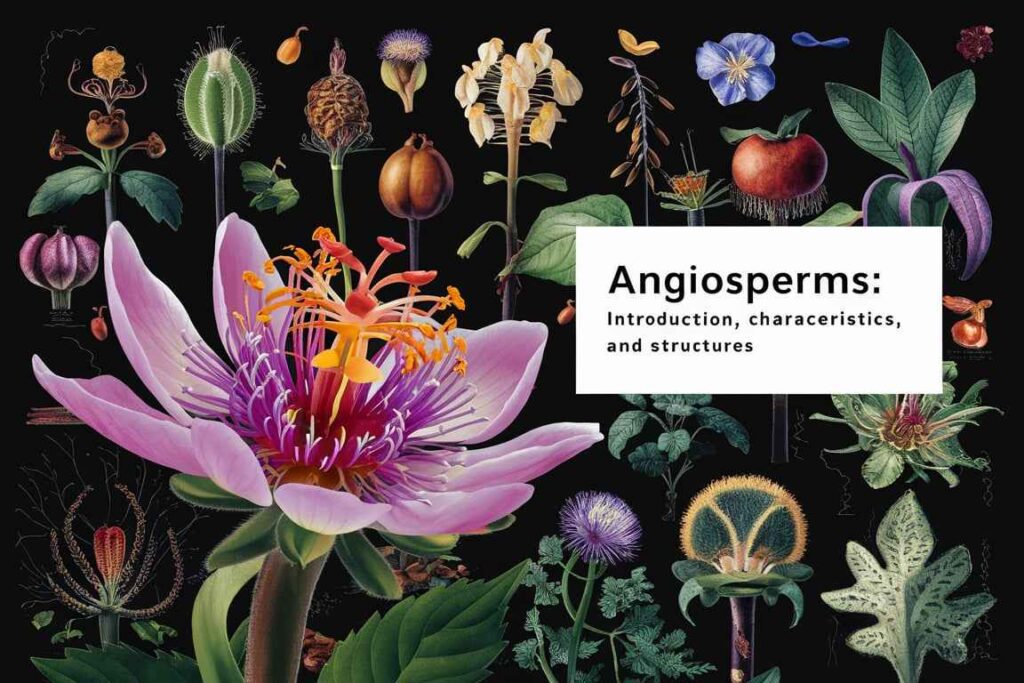
Characteristics
Flower
- The major reproductive structure is made up of sexual reproduction organs.
- Made up of sepals, petals, stamens, and carpels.
Seeds Enclosed in Fruits
- Seeds grow inside an ovary, which eventually grows into a fruit.
- This enclosure provides protection and aids in seed distribution.
Vascular System:
- Well-developed xylem and phloem for transporting water, nutrients, and food.
- Xylem usually comprises vessels, which are effective water-conducting cells.
Double fertilization:
- Unique to angiosperms, one sperm fertilizes the egg, resulting in a zygote, and the other sperm fuses with two polar nuclei to form a triploid endosperm, which feeds the developing embryo.
Different Life Forms:
- Contains trees, shrubs, herbs, and vines.
- Found in practically every ecosystem on Earth.
Structures
Flowers:
- Sepals (Calyx): The outer whorl, typically green, shields the flower bud.
- Petals (Corolla) are often colorful and attract pollinators.
- Stamens are male reproductive organs made up of anthers, which produce pollen, and filaments.
- Carpels (pistils) are female reproductive organs that consist of the stigma (which receives pollen), the style (which connects the stigma to the ovary), and the ovary (which contains ovules).
Leaves:
- Typically broad and flat, designed for photosynthesis.
- Vein patterns can be parallel or reticulate (net-like).
Stems:
- Support the plant by transporting water, nutrients, and nourishment.
- It can be either herbaceous (soft) or woody.
Roots:
- Anchor the plant and absorb moisture and nutrients from the soil.
- Taproots are single, massive roots, while fibrous roots are a network of thin roots.
Seeds and fruit:
- Seeds contain the embryo, endosperm, and seed coat.
- Fruits: Grow from the ovary and sometimes other flowers parts; facilitate seed dispersal.
Key Structures
Stamens and Carpels
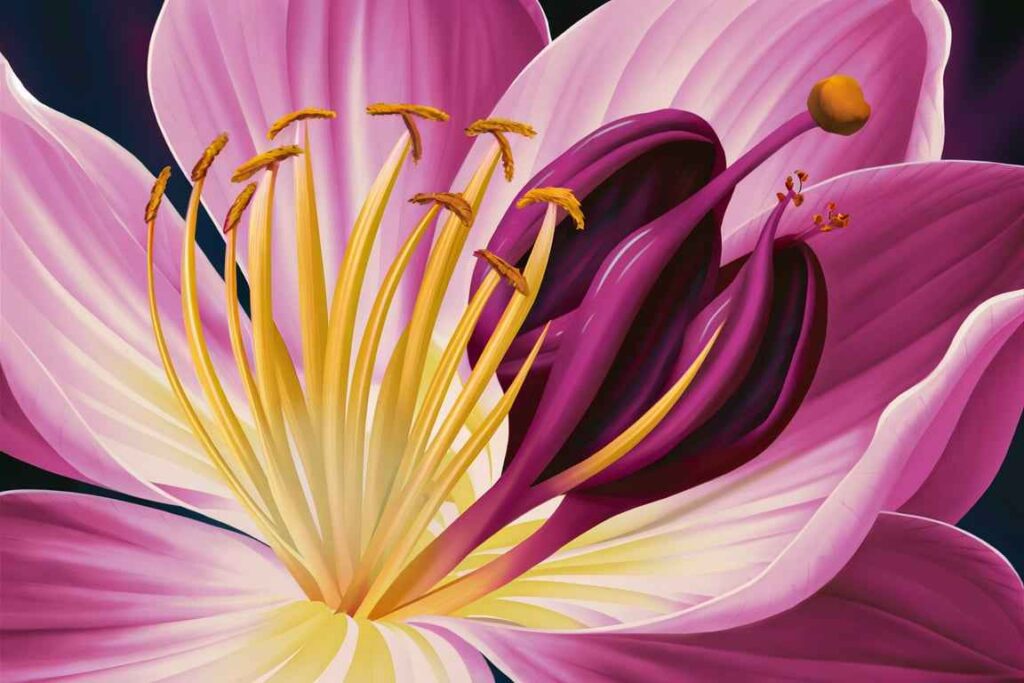
Stamens:
- Anthers produce pollen grains that contain male gametophytes.
- Filament: A structure that supports the anther.
Carpels:
- Stigma: A sticky surface where pollen settles.
- Style: Connects stigma to the ovary.
- The ovary contains ovules, which grow into seeds following fertilization.
Double fertilization:
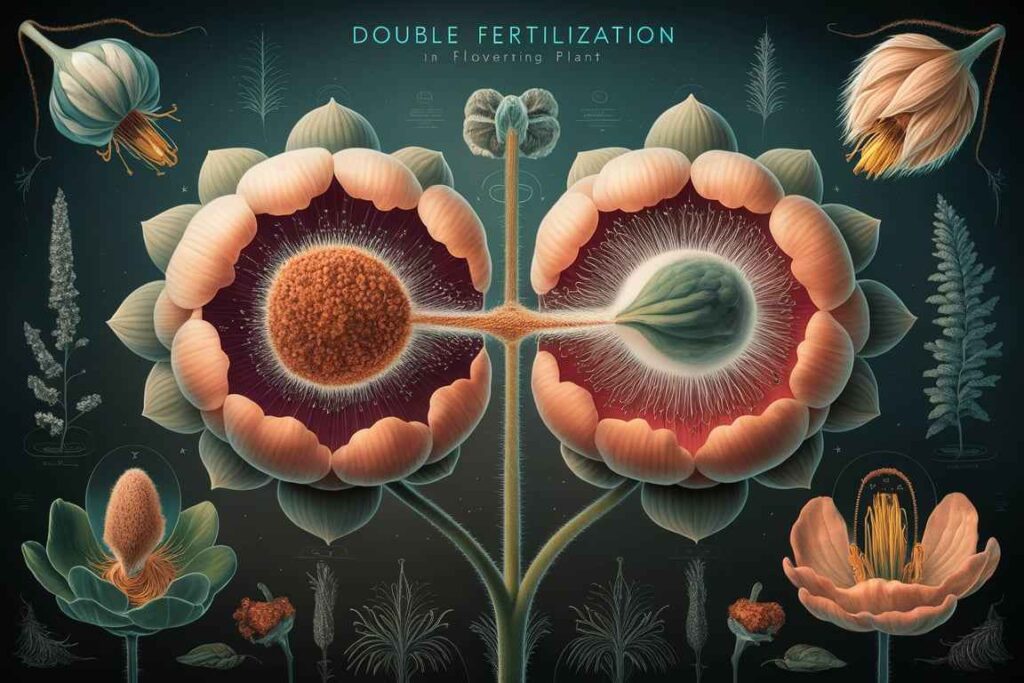
- A unique procedure in which two sperm cells enter the ovum.
- One sperm fertilizes the egg, resulting in the zygote (2n).
- The other sperm combines with two polar nuclei to generate a triploid endosperm (3n).
Fruit Types:
- Simple fruits, such as apples and cherries, develop from a single ovary.
- Aggregate Fruits: Grow from many ovaries of the same flower (e.g., strawberries).
- Multiple Fruits: Grow from the ovaries of several flowers (e.g., pineapple).
Frequently Asked Question(FAQ)
What is Angiosperms ?
Angiosperms belong to the Magnoliophyta division and are distinguishable from other plant groups by their reproductive organs, which are flowers. The term “angiosperm” is derived from the Greek words “angion,” meaning “vessel,” and “sperma,” meaning “seed,” alluding to the seeds found within a fruit.
What are the Structures of Angiosperms?
The Structures of Angiosperms are
1. Flowers
2. Leaves
3. Stems
4. Roots
5. Seeds and fruit
Related Article:
Butyrate Disk Test- Principle, Procedure, Results, Uses, Limitations

